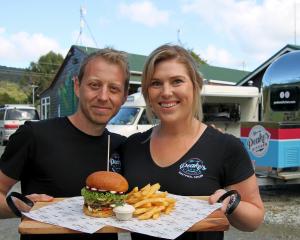
"It's possible that the people who arrived here sailed direct from Tahiti over 4000km of open water - a distance comparable from Tahiti to Hawaii," retired geologist Dr Ross Ramsay said.
Early Maori settlers of the southern South Island may have followed "the patterns of migratory birds rather than `island hopping' through the Tonga-Kermadec arc and then fanning out around the North Island as other waka did".
`If that's the case, then we're talking about navigators with extraordinary ability," he said.
Dr Ramsay, who is visiting Dunedin, said the three scoria blocks, which were being studied with an electron microscope at the University of Otago, could become the "holy grail" of New Zealand archaeology.
"We believe that no other early Maori artefact firmly located in a Maori occupation site has been sourced back to a particular island in the Hawaiki Zone."
It is believed the blocks were from Mehetia, an uninhabited volcanic island, about 110km east of Tahiti.
Heritage New Zealand said yesterday that the geochemical signatures of the three scoria blocks found in three early Maori occupation sites could potentially "challenge understanding of prehistoric human settlement" in New Zealand.

The four recently completed geochemical testing of what they believe are likely to be three marae stones brought to this country by some of the earliest east Polynesian settlers, from their ancestral home in the Hawaiki zone.
It appeared the early navigators placed the scoria blocks, or marae stones, which had religious significance, at different points of their arrival in the southern South Island.
Dr Ramsay, a former Invercargill resident who now lives in Kerikeri with his wife Gael, is a former manager of the Southland Museum and Art Gallery.
The petrographical and geochemical signatures of the three blocks were closely comparable, as was a similar stone brought back from Tahiti by former Otago Museum director Dr H.D. Skinner in the early 1930s.
The three South Island blocks had been found at different times over nearly 50 years - two having been excavated from archaeological sites also containing east Polynesian-style artefacts and remains of extinct moa.
The third block was found on a sand dune in Stewart Island with "eroding Maori cultural material very close by", he said.
The first scoria block was discovered in January 1939, by archaeologists David Teviotdale and former Otago museum staff member Les Lockerbie in the Catlins, and the second by Mr Lockerbie and Bill Knox in the early 1960s in an excavation at Tautuku, South Otago.
Otago Museum curator, Maori, Rachel Wesley and director of collections, research, education and design, Robert Morris said the recent research also showed "the value of museums holding archaeological collections".
They were keen to see if more scoria blocks were identified as a result of publicising the work of Dr Ramsay and his associates.
It was pleasing that current technology could help "bring to fruition" the mid-20th century research ambitions of previous staff members of the museum.
Ms Wesley was looking forward to seeing how the research added to the archaeological history and complemented the "traditional history of southern Maori".












